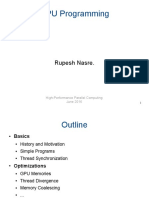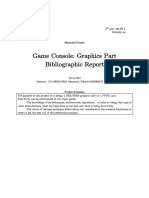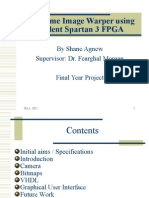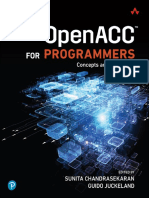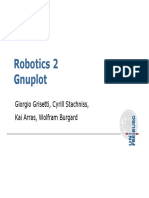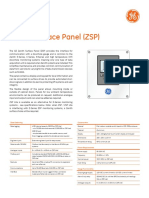100% found this document useful (2 votes)
232 views96 pagesAccelerating Scientific Computing with GPUs
This document discusses accelerating scientific computing using graphics hardware. It provides background on increasing transistor counts and parallel processing using GPUs. It discusses GPU programming models and an example application to computational fluid dynamics using the lattice Boltzmann method. Kernels, grids, blocks and threads are key abstractions for GPU programming.
Uploaded by
Jino Goju StarkCopyright
© © All Rights Reserved
We take content rights seriously. If you suspect this is your content, claim it here.
Available Formats
Download as PDF, TXT or read online on Scribd
100% found this document useful (2 votes)
232 views96 pagesAccelerating Scientific Computing with GPUs
This document discusses accelerating scientific computing using graphics hardware. It provides background on increasing transistor counts and parallel processing using GPUs. It discusses GPU programming models and an example application to computational fluid dynamics using the lattice Boltzmann method. Kernels, grids, blocks and threads are key abstractions for GPU programming.
Uploaded by
Jino Goju StarkCopyright
© © All Rights Reserved
We take content rights seriously. If you suspect this is your content, claim it here.
Available Formats
Download as PDF, TXT or read online on Scribd
/ 96





